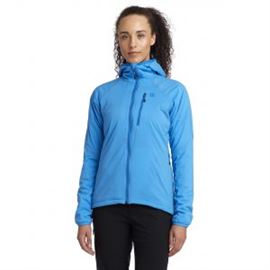Wet. Cold. Hungry. The only three things that can ruin my ski day. But with the right layering strategy none of them should ever be an issue. Dressing properly addresses the first two, obviously, and should create some storage room for the third.
The best way to stay dry and warm is to layer clothing properly. To get the skinny on how to do it right we talked to Spring Harrison, MEC’s backcountry apparel designer.
“The biggest mistake people make when layering is assuming their layers work the same in all conditions, which can result in them either overdressing or underdressing,” she says. “The goal of layering is to extend your range of comfort while being active in a varying conditions. With the right layers, you can go hard without overheating and stay warm when taking a break or riding the chair lift.”
There are lots of ways of layering, but the basics are the same: base layer to pull moisture off the skin, a mid layer that breaths and locks in heat, and an outer layer to block rain, snow and wind.
“The type of fabric you choose will depend on climate, activity level, and desired amount of warmth,” says Harrison.
Most base layers are either made from synthetic fabrics, like polyester, or merino wool. Synthetics dry faster and cost less. They used to have a smell problem, retaining body odour, but some are now treated with antimicrobial treatments like Polygiene. Wool is naturally odour resistant, warmer for the weight and absorbs up to 35 percent of its weight in moisture, helping it stay dry to the touch. But it tends to cost more and take longer to dry. Regardless of what they’re made from base layers should fit close to skin so they can pull moisture off the skin effectively.
Midlayers are equally diverse in construction. The key here is breathable insulation – after the base layer moves the moisture off the skin the mid layer should help continue the process, moving the sweat vapour towards the exterior of the layering system. That’s why down jackets are not a good choice. To contain the tufts and feathers, jackets stuffed with down use tightly woven fabrics, which don’t breath. Get working with a down jacket on and you’ll soon be sweaty. When you stop moving all that sweat will get cold fast. Instead look for mid-layers made from wool, fleece or synthetic insulation. Save your down for an extra layer to pull on at rest stops or when skiing down.
Finally the outer layer should include a waterproof-breathable membrane. This layer is the final step in moving sweat vapour outside the system, while at the same time keeping the elements out.
The trick to layering is figuring out what works for you in what conditions. MEC’s layering system comes in varying weights and warmths. Experiment with different combos to find what works best in a typical day and then adjust from there for the specific conditions. For instance, someone that sweats more might be more comfortable with a synthetic base, while someone who is always cold might want to focus on wool. Or on a really cold day you might want to add an extra mid layer to the mix, while on a sunny spring afternoon you might ditch the outer layer.
The other thing to keep in mind is that layering is dynamic: because you’re using multiple piece to create the perfect climate you can micro adjust by taking layers off or adding them, opening vents and zippers, etc.
Combine them right and all you have to worry about is staying properly fuelled.
by RYAN STUART




